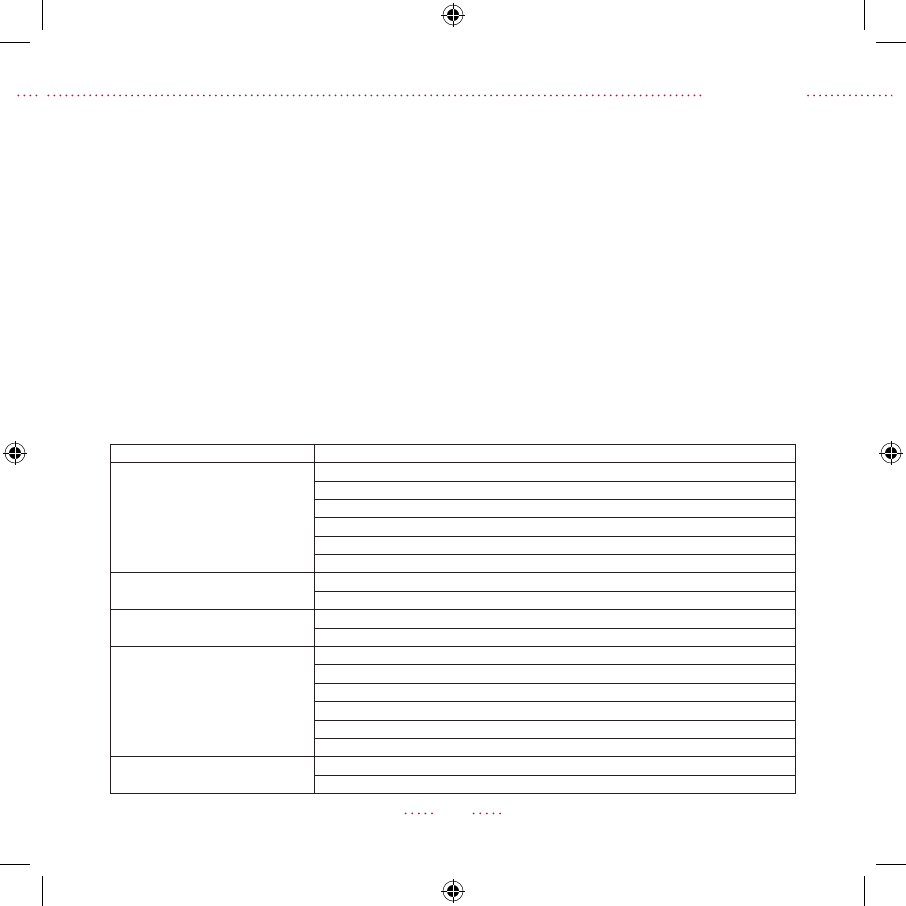Хлебопечки Rondell RDE-1640 - инструкция пользователя по применению, эксплуатации и установке на русском языке. Мы надеемся, она поможет вам решить возникшие у вас вопросы при эксплуатации техники.
Если остались вопросы, задайте их в комментариях после инструкции.
"Загружаем инструкцию", означает, что нужно подождать пока файл загрузится и можно будет его читать онлайн. Некоторые инструкции очень большие и время их появления зависит от вашей скорости интернета.

9
ENGLISH
Animal and vegetable fats
Animal and vegetable fats make the pastry softer and increase
its storage life. Cut butter into small cubes or let it melt a little
before adding it.
Baking powder and soda
Soda and baking powder (leaven) shorten the time neces-
sary for dough rising. Use leaven or soda when baking in the
«FAST BAKING» mode. It is necessary to mix soda with citric
acid and a little flour beforehand (5 g of baking soda, 3 g of
citric acid and 12 g of flour). This amount of powder (20 g) is
rated for 500 g of flour. Do not use vinegar for soda slaking, it
will make the crumb less homogeneous and more wet. Baking
powder (leaven) is just to be poured into the form following
recipe instructions.
Water
Water temperature plays the crucial role in bread making pro-
cess. The optimal water temperature is 20-25°С, for «FAST
BAKING» mode the optimal water temperature is 45-50°С. You
may as well use milk instead of water or enrich bread flavor by
using some natural juice.
Dairy products
Dairy products improve the nutrition value and flavor of the
bread. The crumb becomes more beautiful and savory. Use
fresh dairy products or powdered milk.
Fruit and berries
Use only fresh and quality fruit and berries for jam making.
DOSAGE
The secret of good bread lies not only in the quality of ingredi-
ents but also in precise abidance to their proportions.
–
Use a kitchen scale, the beaker (9) and the spoon (10). The
measuring spoon (10) is two-sided. The capacity of one side
is equal to one teaspoon, the other - to one tablespoon.
–
Fill the beaker (9) with liquid to the appropriate mark. Check
dosage, placing the beaker (9) on a flat surface.
–
Clean the beaker (9) thoroughly after measuring previous
ingredients.
–
Do not compact dry ingredients when putting them into
the beaker (9).
–
It is important to screen the flour through the strainer before
the use in order to saturate it with air; this provides the best
baking quality.
Baking problems and the recommendations to solve them
The dough rises too quickly
Excessive quantity of yeast, flour or insufficient quantity of salt
The bread won’t rise
Not enough yeast
Old or inactive yeast
Yeast came in contact with liquid ingredients or salt before kneading
Wrong selection of flour sort, or flour is of poor quality
Not enough sugar
Soft water leads to more active yeast growth
Intensive dough rising, dough gets
out of the baking form
Excessive quantity of yeast or flour
Excessive quantity of dough
Bread dropped in the middle
Yeast growth is poor because of high temperature of the liquid or its excessive quantity
Excessive quantity of flour or lack of liquid
Dense crumb, clumps
Not enough yeast and sugar
Excessive quantity of fruit, whole grains, etc.
Flour of poor quality
Excessive liquid temperature leads to quick yeast growth and early dough dropping
No salt or not enough sugar
Lack of flour
Bread is slack-baked in the middle
Using much liquid and liquid ingredients (for example, yogurt)
Excessive quantity of liquid ingredients












































